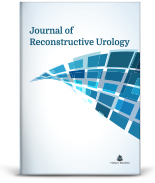Objective: The aim of this study is to determine how patients' expectations of healthcare services and physicians vary based on demographic factors such as gender, education level, and economic status, and to explore the relationship between these expectations and satisfaction. Additionally, it seeks to analyze the levels of dissatisfaction when these expectations are not met and how this information can contribute to the improvement of healthcare policies and practices. Material and Methods: A survey was conducted with 556 patients at a urology outpatient clinic between March and June 2023. Patients were asked 23 questions regarding demographics, clinical expectations, and satisfaction factors. Data were analyzed using the chi-square test. Results: The majority of participants were male (68.3%) and had low-income levels (73.7%). Most patients sought examination within 24 hours and expected an examination time of 5-15 minutes. Women's desire to reach their doctors by phone was significantly higher than men's (p=0.004). Higher education correlated with lower dissatisfaction rates even if hospital demands were unmet (p<0.0001). Low-income individuals were more likely to be dissatisfied with their doctors if unsatisfied with general hospital services (p=0.028). Middle-high income individuals were more likely to pay for examination by a preferred academic title physician (p=0.011). Conclusion: Patient expectations vary based on gender, education level, and economic status, significantly influencing satisfaction. Understanding these parameters can guide improvements in healthcare policies and practices.
Keywords: Hospital-patient relations; patient preference; physician-patient relations; patient rights
Amaç: Bu çalışmanın amacı, hastaların sağlık hizmetleri ve hekimlerden beklentilerinin cinsiyet, eğitim seviyesi ve ekonomik durum gibi demografik faktörlere göre nasıl değiştiğini belirlemek ve bu beklentiler ile memnuniyet arasındaki ilişkiyi keşfetmektir. Ayrıca, bu beklentilerin karşılanmadığı durumlarda ortaya çıkan memnuniyetsizlik düzeylerini analiz etmek; bu bilgilerin sağlık politikaları ve uygulamalarının iyileştirilmesine nasıl katkıda bulunabileceğini araştırmaktır. Gereç ve Yöntemler: Mart ve Haziran 2023 tarihleri arasında bir üroloji polikliniğinde 556 hasta ile bir anket çalışması gerçekleştirilmiştir. Hastalara demografik bilgiler, klinik beklentiler ve memnuniyet faktörleriyle ilgili 23 soru sorulmuştur. Veriler ki-kare testi kullanılarak analiz edilmiştir. Bulgular: Katılımcıların çoğunluğu erkek (%68,3) ve düşük gelir seviyesine (%73,7) sahiptir. Çoğu hasta, 24 saat içinde muayene olmayı ve 5-15 dk süren bir muayene süresi beklemektedir. Kadınların doktorlarına telefonla ulaşma isteği erkeklerden anlamlı derecede daha yüksektir (p=0,004). Daha yüksek eğitim seviyeleri, hastane talepleri karşılanmasa bile daha düşük memnuniyetsizlik oranlarıyla korelasyon göstermektedir (p<0,0001). Düşük gelirli bireyler, genel hastane hizmetlerinden memnun kalmadıklarında doktorlarından da daha fazla memnuniyetsizlik yaşamaktadır (p=0,028). Orta-yüksek gelirli bireyler, tercih ettikleri akademik ünvana sahip bir hekim tarafından muayene olmak için ödeme yapmaya daha yatkındır (p=0,011). Sonuç: Hasta beklentileri, cinsiyet, eğitim seviyesi ve ekonomik duruma göre değişiklik göstermekte ve memnuniyeti önemli ölçüde etkilemektedir. Bu parametrelerin anlaşılması, sağlık politikaları ve uygulamalarının iyileştirilmesinde rehberlik edebilir.
Anahtar Kelimeler: Hastane-hasta ilişkileri; hasta tercihi; doktor hasta ilişkileri; hasta hakları
- Al-Abri R, Al-Balushi A. Patient satisfaction survey as a tool towards quality improvement. Oman Med J. 2014;29(1):3-7. [Crossref] [PubMed] [PMC]
- Zarei E, Daneshkohan A, Pouragha B, Marzban S, Arab M. An empirical study of the impact of service quality on patient satisfaction in private hospitals, Iran. Glob J Health Sci. 2014;7(1):1-9. [Crossref] [PubMed] [PMC]
- Türk-İş. Haber Bülteni. 2023. [Link]
- Keiningham T, Cooil B, Andreassen T, Aksoy L. A longitudinal examination of net promoter and firm revenue growth. Journal of Marketing American Marketing Association. 2007;71(3):39-51.. [Crossref]
- Ferreira DC, Vieira I, Pedro MI, Caldas P, Varela M. Patient satisfaction with healthcare services and the techniques used for its assessment: a systematic literature review and a bibliometric analysis. Healthcare (Basel). 2023;11(5):639. [Crossref] [PubMed] [PMC]
- Rabley A, Oberhofer H, Han J, Larson S, Moy L. Understanding patient expectations and determinants of satisfaction in an outpatient urology clinic at an academic medical center. Urology. 2022;160:22-33. [Crossref] [PubMed]
- Lukacs S TB, Mukerji G, Vale J, Mazaris E. How to improve a urology outpatient service? A survey of patient satisfaction. World J Clin Urol. 2013;2(3):46-52. [Crossref]
- Wali R, Alhakami A, Alsafari N. Evaluating the level of patient satisfaction with telehealth antenatal care during the COVID-19 pandemic at King Abdul-Aziz Medical City, Primary Health Care Center, Specialized Polyclinic. Womens Health (Lond). 2022;18:17455057221104659. [Crossref] [PubMed] [PMC]
- Lateef F. Patient expectations and the paradigm shift of care in emergency medicine. J Emerg Trauma Shock. 2011;4(2):163-7. [Crossref] [PubMed] [PMC]
- Kessler DP, Mylod D. Does patient satisfaction affect patient loyalty? Int J Health Care Qual Assur. 2011;24(4):266-73. [Crossref] [PubMed]
- Stokes DC, Pelullo AP, Mitra N, Meisel ZF, South EC, Asch DA, et al. Association between crowdsourced health care facility ratings and mortality in US counties. JAMA Netw Open. 2021;4(10):e2127799. [Crossref] [PubMed] [PMC]
- Johnson K. The link between patient experience and hospital reputation. National Research Corporation. 2014(1):1-8. [Link]







.: Process List